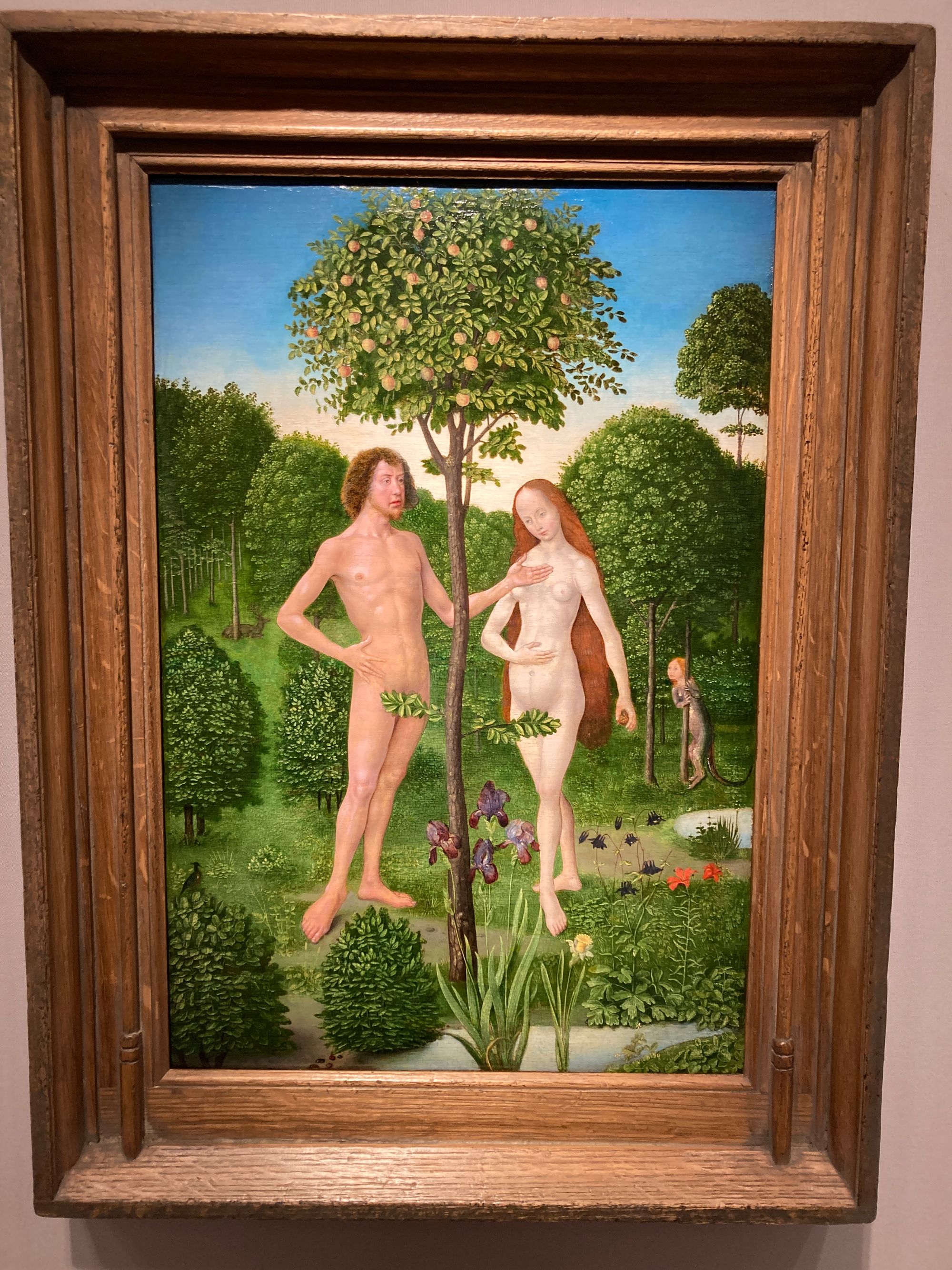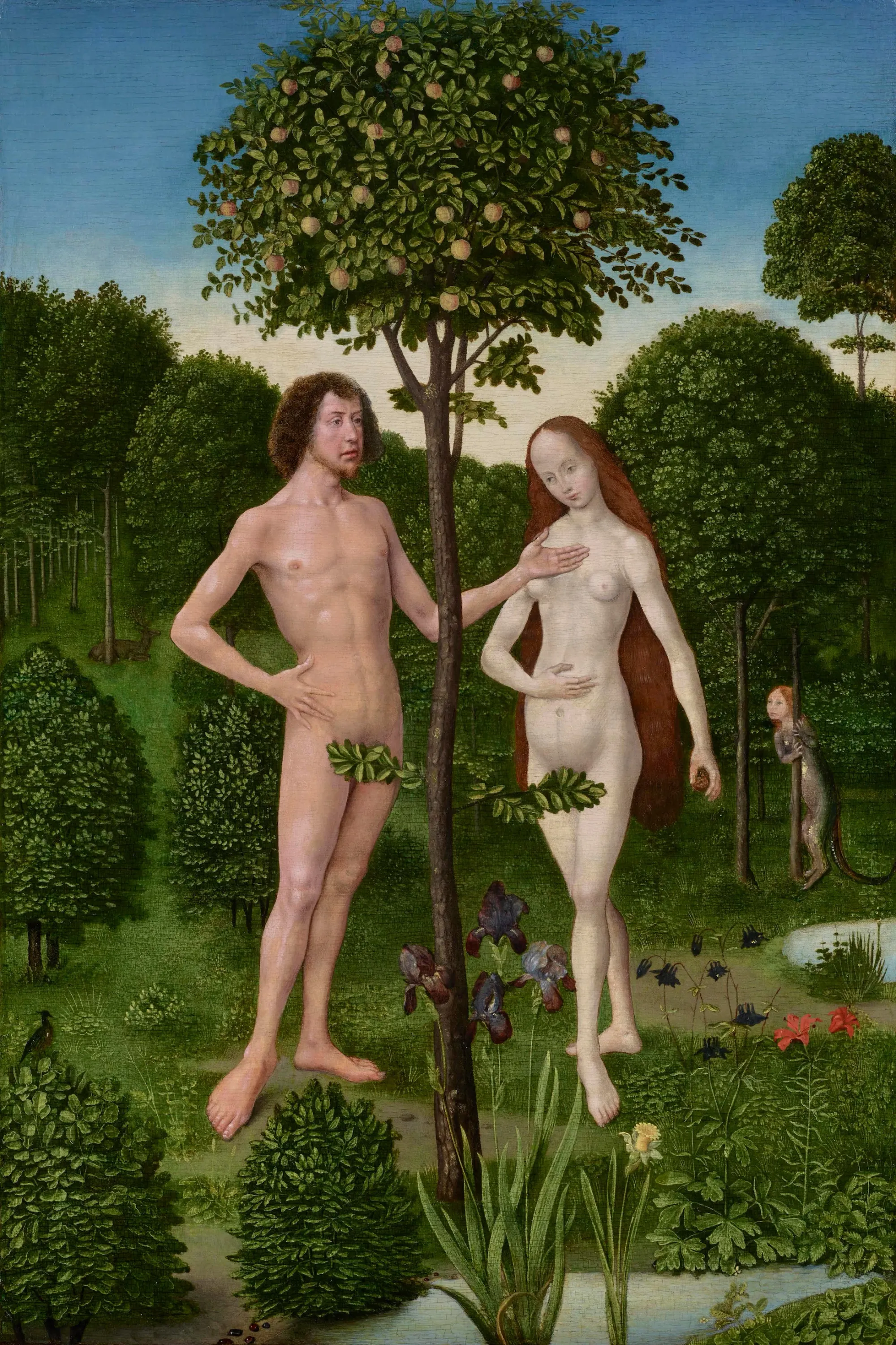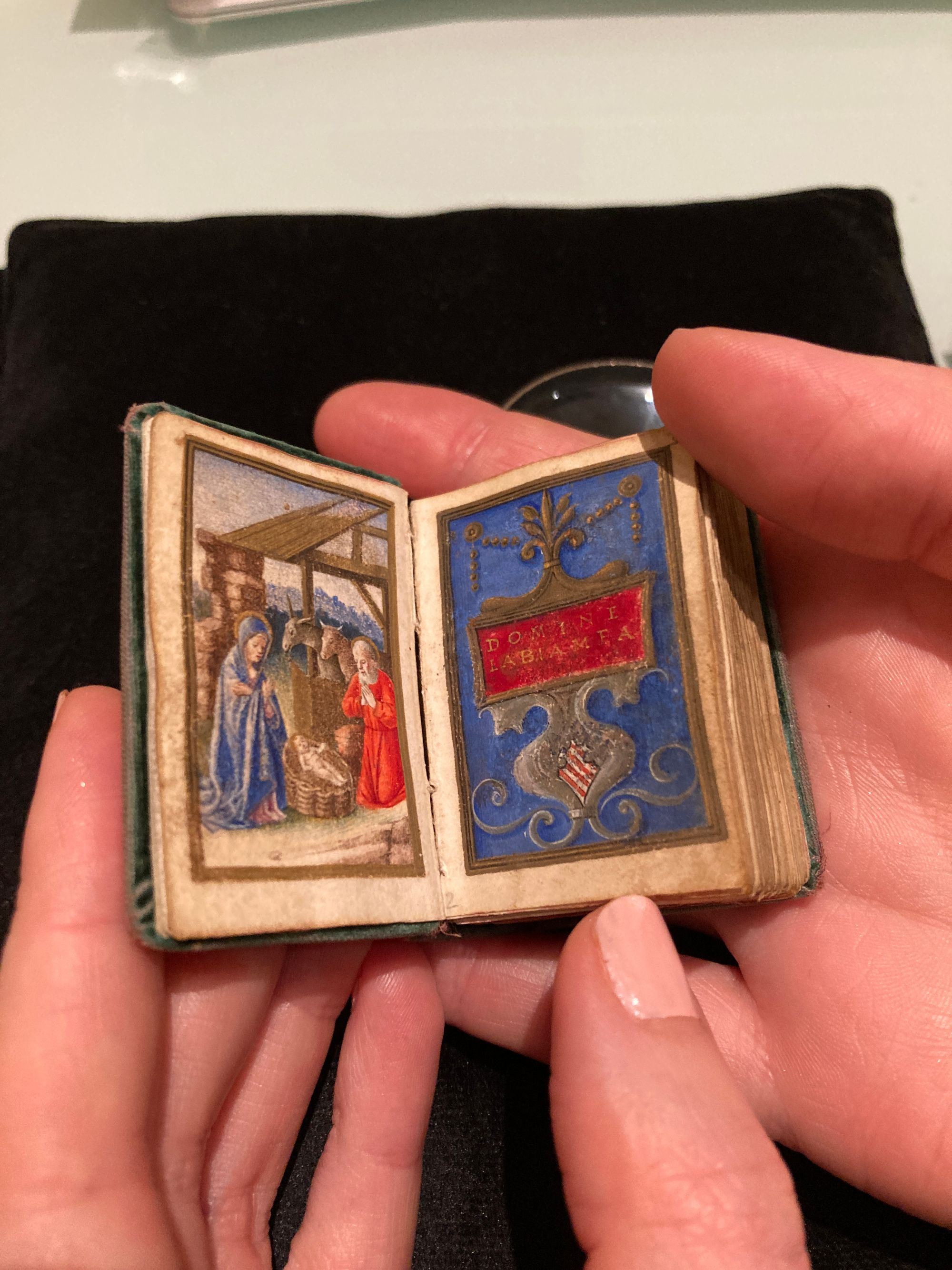Northern Renaissance highlights from TEFAF Maastricht 2023

I attended TEFAF Maastricht this year for the first time. There was not an immensely wide selection of 15th century northern artworks, however a few were quite interesting. I had the opportunity to meet some top academics, including Till-Holger Borchert and Sandra Hindman, and some other folks who know the ins and outs of the industry.

The most interesting purely Netherlandish work that stood out to me was The Fall of Man (or Adam and Eve in the Garden of Eden) by the notname Master of the Embroidered Foliage, which was recently purchased last summer at Bonhams by De Jonckheere Gallery for ~800,000 GBP. The painting was since cleaned and touched up in certain areas, in particular in the top left in the sky. Below is the before and after:



It is always important to check how much touch up was required after the cleaning, but the painting looks incredible and vibrant in the current state. The subject of the painting affords itself well to the Master of the Embroidered Foliage's techniques of painting trees, bushes, and foliage in detail.
The painting is one of three paintings of the subject made by the Master of the Embroidered Foliage after an original composition attributed to the Ghent genius Hugo van der Goes in the Kunsthistorisches Museum in Vienna as the left half of a diptych. Incredibly, De Jonckheere also owns another version of the painting, and the third is in the Wilhelm-Hack-Museum in Ludwigshafen, Germany.
Given the extreme rarity, it is incredible that the gallery owns two paintings of the same composition. The Friedlander database yields ~35 results for extant works by the Master of the Embroidered Foliage, but the actual number is considerably lower considering a number have been reattributed, including the Sts Jerome and Catherine on view at the Rijksmuseum as simply Anonymous.


The other De Jonckheere version was also purchased at auction, at Christie's in November 2012. Interestingly, it sold for 1.4m Euros, more than the new one, although the market for Netherlandish art was not as hot in 2012 as it is now (+ inflation).
There are some differences between the Master of the Embroidered Foliage's versions. For instance, De Jonckheere's Christie's panel depicts both a lion and a deer, while the De Jonckheere's Bonhams panel depicts a deer and a bird identified in the Bonhams essay as a kingfisher, and the Wilhelm-Hack-Museum version depicts only a lion.
The Wilhelm-Hack-Museum version and the De Jonckheere's Christie's version are more similar to each other than to the De Jonckheere's Bonhams version on display at TEFAF. In both the grass is more yellow, and Adam wears a loincloths of leaves. The Bonhams essay stated: "The present work relates closest to the van der Goes altarpiece, as it is the only version where Eve holds the apple in her hand, and Scherer argues that it is likely to be the earliest of the three versions (op. cit, 2007, p. 36)." Christie's wrote: "The Kidston version relates closest to the composition by Hugo van der Goes. Adam's hairdo is most similar to the Van der Goes altar piece".

Certainly this was a popular composition by van der Goes.
Without getting too deep into the academic weeds, the current academic opinion is that the notname Master of the Embroidered Foliage represents a style employed by a variety of artists at the time of around 1480-1510, possibly several workshops or studios. The Bonhams essay cited the only book specifically about the Master of the Embroidered Foliage, written by French academic Florence Gombert for a 2005 exhibition of the Master's works in Lille, and sadly not available in english as far as I can tell. Bonhams stated: "Florence Gombert's research reveals that the Master's works were created by a variety of artists from different workshops across Flanders, rather than by a single artist (Gombert, op. cit., 2005)".
Part of collecting Early Netherlandish art means dealing with often anonymous artists and a complex and hard to define relationship between studio and master, and in many cases it is a good thing, because we are left to judge the art on the merits of its craftsmanship and quality rather than by association.
Another high quality Netherlandish artwork at TEFAF 2023 was the tapestry Enclosed Garden with Animals at De Wit Gallery, which sold.

A very pleasant tapestry, with a chaotic scene of animals and a mythical creature interacting in a garden. The top of the tapestry is equally appealing with the gothic tracery border, a hallmark of Netherlandish painted art but less common in surviving tapestries. The tapestry is thought to be from the Southern Netherlands, early 16th century, and is fragmentary.
The French gallery Brimo de Laroussilhe had some interesting and high quality 15th century enamelled gold plaques.

This plaque was previously in the collection of Alphonse James de Rothschild, and stayed in the family until December 2000 when it was auctioned at Christie's for just 9,988 GBP. An incredible investment! Today it is worth multiple orders of magnitude more. In the year 2000 Christie's wrote "Although it does not appear to fit into any known school, the plaque is closest in style to Flemish work of the first half of the 15th Century". Brimo de Laroussilhe suggests it was probably made for John of Lancaster, Duke of Bedford, in Paris during the first 1/3rd of the 15th century. The donor is portrayed kneeling in the middle at the bottom in a maroon tunic. This plaque is reminiscent of manuscript illumination of the same period.
Lastly, I looked at some incredible manuscripts at Les Enluminures Gallery. Although from Italy rather than Northern Europe, I saw one of the smallest illuminated book of hours known! Likely commissioned by a member of the Belegno family, it is known as the Belegno Hours and was produced in Venice around the start of the 16th century.


